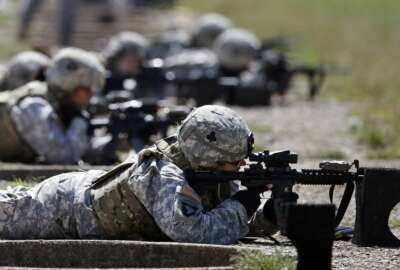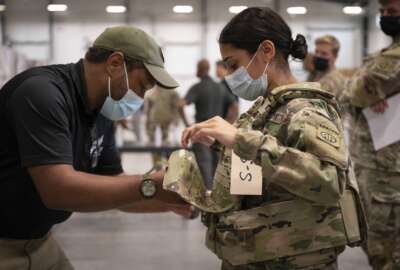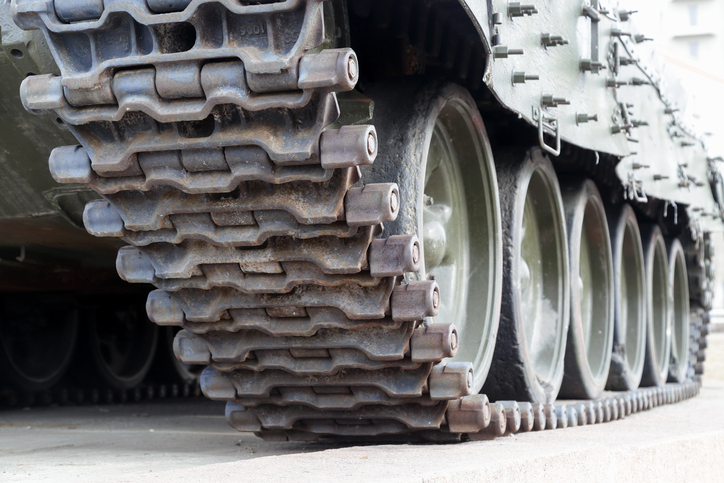PEO Soldier adjusts body armor to better fit women
The Army’s smaller, lighter body armor helps women and smaller male soldiers achieve greater mobility and easier use of weapons.
After years of trial and error, the Army advanced the design of its body armor with sizes and adjustments to fit women and male soldiers who needed smaller sizes. However, the new designs have been fielded incrementally over the last two years and were originally only available to deployed female soldiers. Women service members still list body armor fit as one of their biggest concerns.
PEO Soldier program managers said use of the new design is becoming more prevalent and gets a 90% positive response from female soldiers. As a result of the positive response, the Marines and Air Force are adopting it.
The new designs came out of a three-year study started in 2017 by PEO Soldier to figure out how to improve the armor for a variety of body types.
“We would take soldiers from across the force, bring them in, do body scans, have them try on different prototypes and mock-ups to see and get feedback from the soldiers on how it fit, how it works for them and put them through obstacle courses, have them shoot, go in different positions, things that they would do in the combat environment,” Army Lt. Col. Ken Elgort, PEO Soldier product manager for soldier protective equipment, told Federal News Network.
In surveys of women in the military, poorly fitting armor is a frequently heard complaint. It doesn’t come in small enough sizes and doesn’t accommodate curves. A survey released Aug. 21 of women in the Army Special Operations Command found 44% of women surveyed had problems with poorly fitting body armor and helmets. According to the study, some women reported buying their own body armor in an effort to get a better fit.
PEO Soldier supplies body armor for over 8,500 female soldiers and says offering additional sizes and specialized body plates made the equipment more comfortable. After running tests with female soldiers, Elgort said one of the first fixes was getting more size options for the body armor.
“We looked at all of the body types and how it broke down and we came up with a new sizing regime. The standard for the force in the past was five sizes. We can better accommodate our force by adding three additional sizes, and all of those additional sizes fell within that smaller stature,” Elgort said. “We went from having two sizes in our small stature to five out of eight now in that small stature. With those eight sizes, we can accommodate the 98th percentile of soldiers in the force.”
PEO Soldier uses five different vendors to supply the armor, and they make a combination of soft and hard armor and helmets that in total forms the Soldier Protective System (SPS). One of the newest additions to the system is a ballistic combat shirt that goes under the hardened armor.
“Our ballistic combat shirt is part of our SPS program that is still getting fielded just to deployers. And we have specific female variants of the shirt. So that’s another piece of equipment that has a female tagline on it based on anthropomorphic studies,” Elgort said.
Army Maj. Kim Pierre-Zamora works on PEO soldier team and said the new shirts help with some of the anatomical differences in women’s bodies.
“The Ballistic Combat Shirt-Female has soft ballistics to cover the side bust area to accommodate the offset between the bust and the modular scalable vest. There’s also a sweep in the waist to prevent the shirt from riding up. The female variant also has shorter arm length,” Pierre-Zamora said.
Even with well-fitting armor, just operating equipment and firing weapons while wearing the SPS presents challenges for women or smaller men. The armor design needed to be lighter to improve the wearer’s mobility.
“We wanted to shave off some weight because increased mobility and increased agility is also increased lethality. It’s going to help them move faster,” Pierre-Zamora said. “The soldiers are now able to seat their rifles properly and they don’t have to pick up their vest and move it as they did before. Smaller folks, we don’t always have the luxury of having a lot of room up at the top right. For some of us, when we go to qualify on a weapon or go to shoot, you might have to adjust the top of your vest in order to do that.”
Copyright © 2025 Federal News Network. All rights reserved. This website is not intended for users located within the European Economic Area.
Alexandra Lohr, a former staff member, covered the Defense Department for Federal News Network until September 2023.







